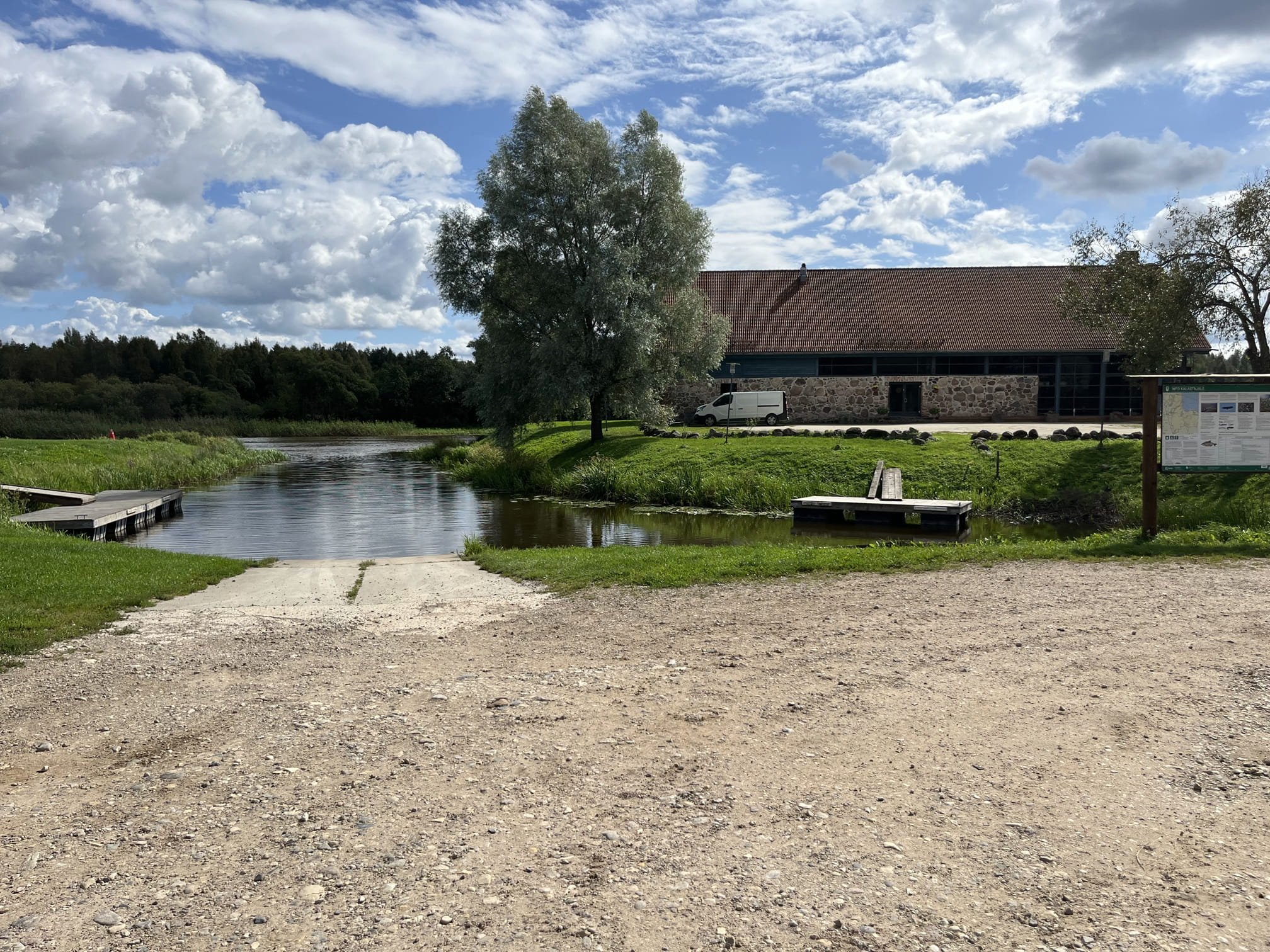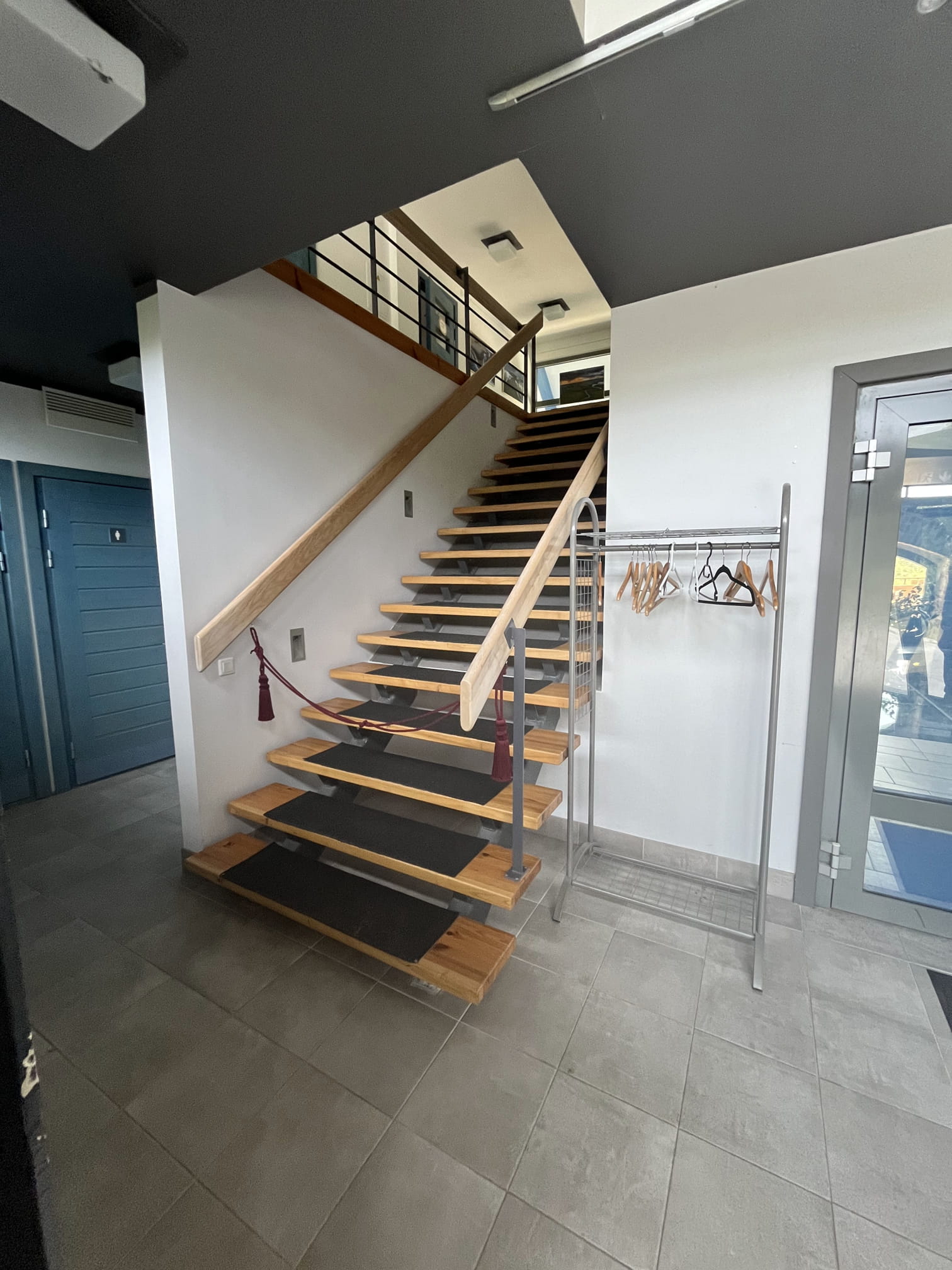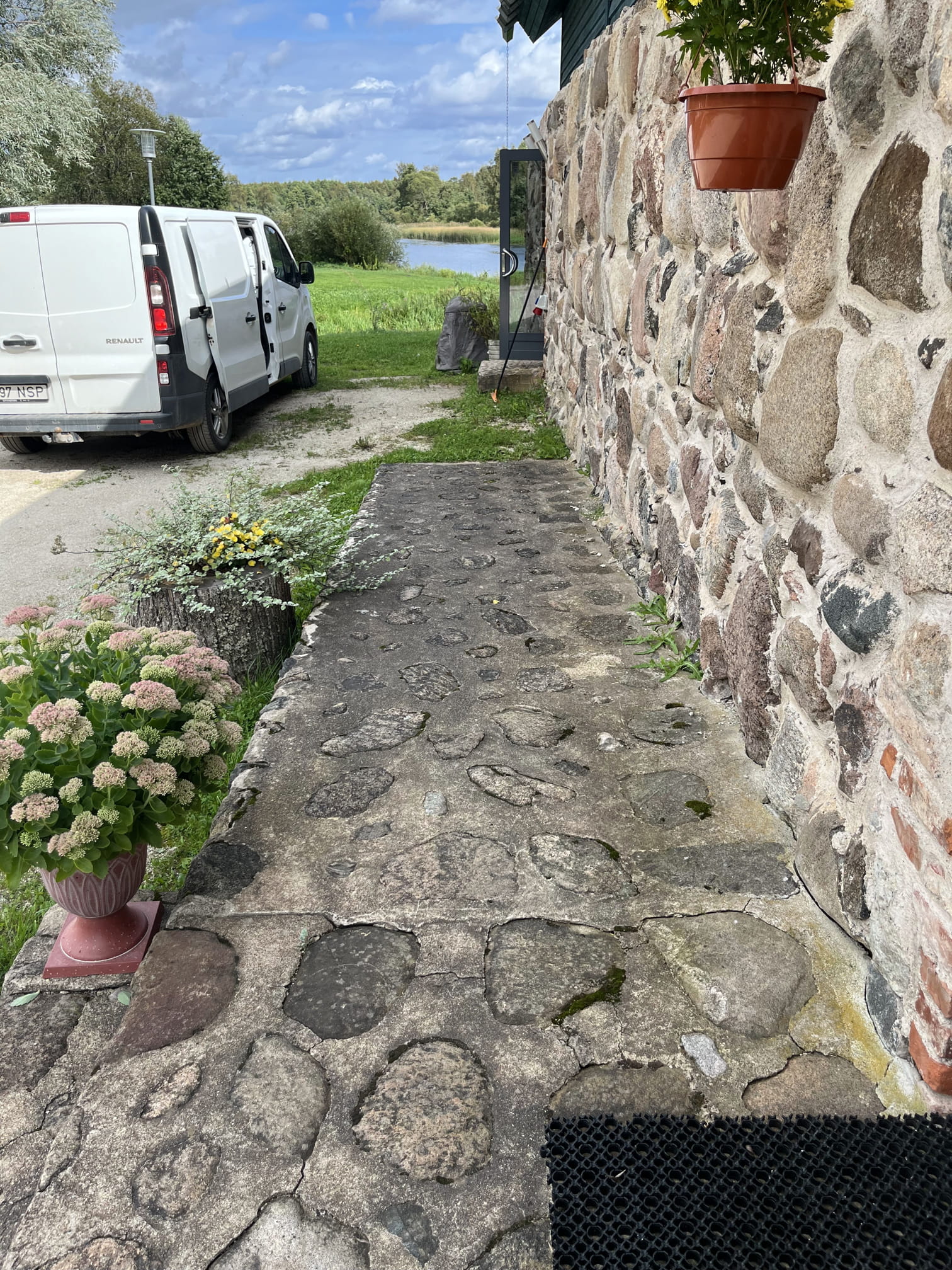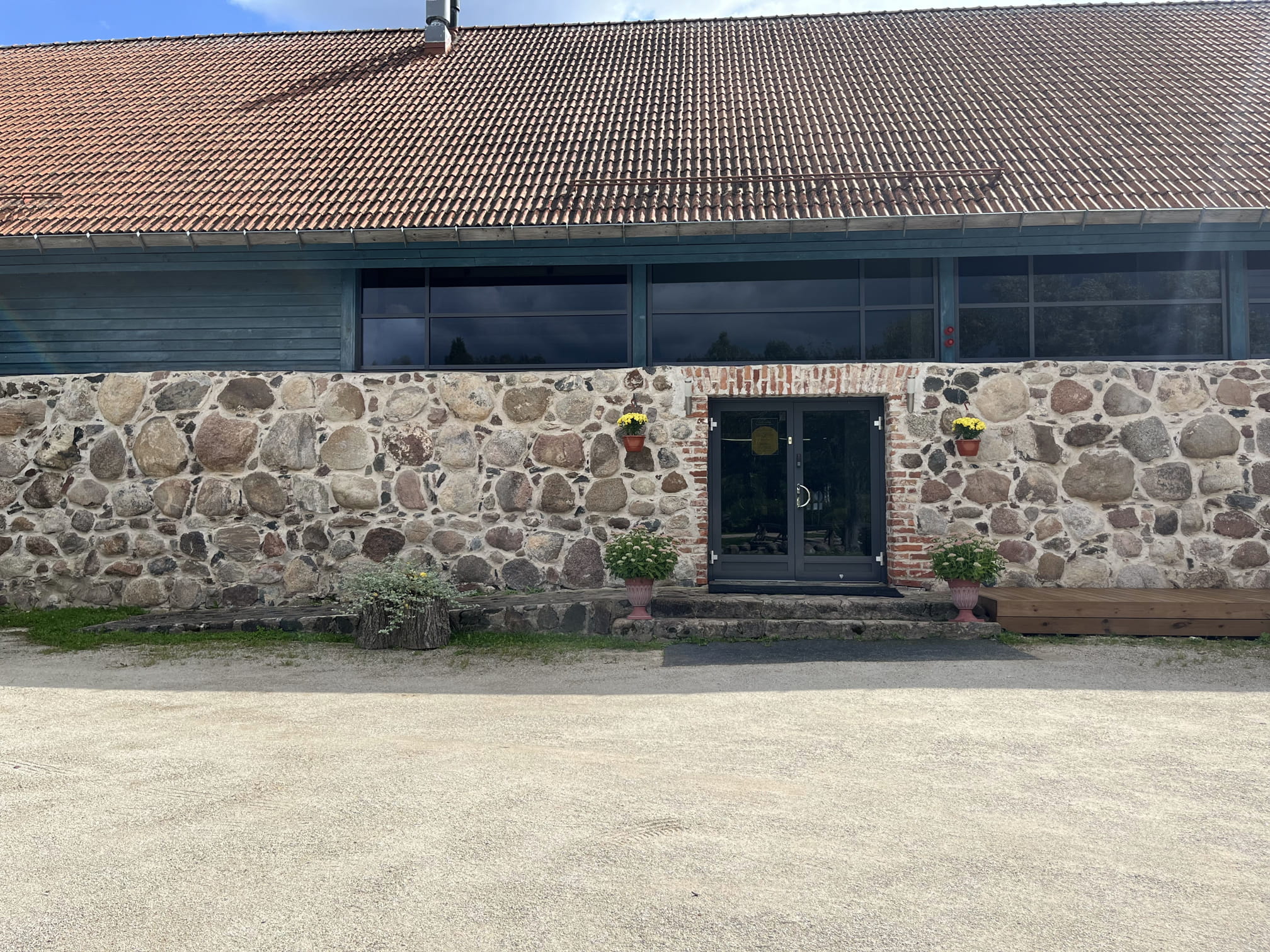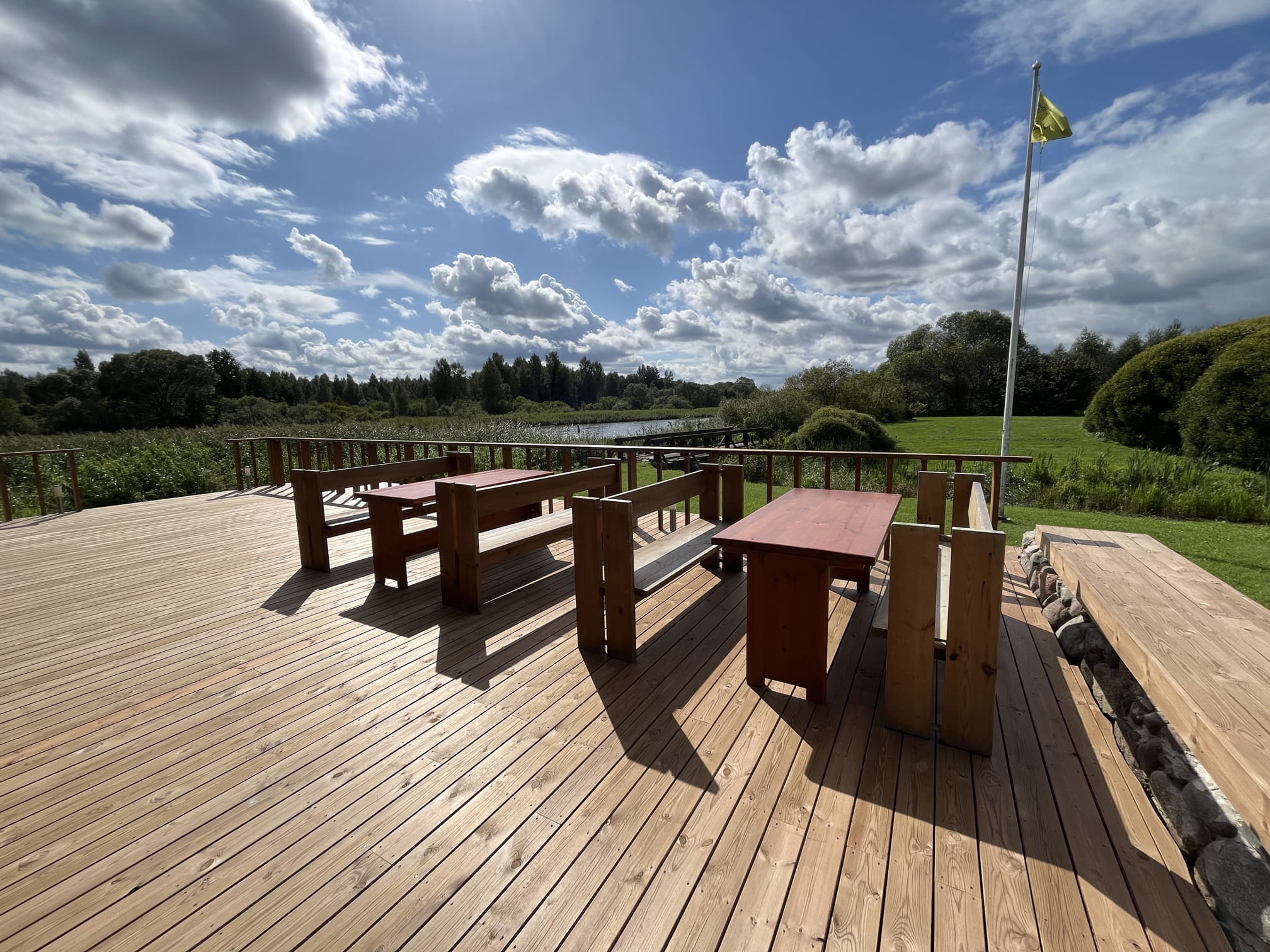Emajõe-Suursoo centrs
Dabas taka, Daļēji pieejams, Ir pielāgota tualete, Pieejams vecākiem ar bērnu ratiņiem
Objektu saraksts
Emajõe-Suursoo centrs atrodas pa labi no mācību dabas takas sākuma. Centrā ir pieejamas konferenču telpas.
Ņemiet vērā: Braukšana takā ar jebkuru transportlīdzekli ir aizliegta! Autostāvvieta paredzēta 20 automašīnām. Transportlīdzekļi jāatstāj stāvvietā pirms vārtiem. Ja nepieciešams, var zvanīt pa tālruni +372 662 5999, lai vienotos par autostāvvietu pie pašas Emajõe dabas centra ēkas.
Tartu bīskapam piederošais forts un muitas punkts Emajo nomainīja iepriekš celto Vana-Kastre fortu. Pils, iespējams, celta 1342. gadā. Apkārt esošā Senākā cietokšņa daļa, iespējams, bija četru sānu torņu cietoksnis, kas vēlāk palika blakus cietokšņa DR daļai, aizsargājot rietumu pusē esošos vārtus.
Jādomā, ka līdz 15. gadsimtam pils bijusi plašāka. Iespējams, 16. gadsimta pirmajā pusē cietokšņa mazā pagalma stūrī tika pabeigts apaļš artilērijas tornis ar šaušanas kamerām lejasdaļā. Uz rietumiem no galvenā forta joprojām redzams forts, ko ieskauj grāvis. Cietoksni iekaroja krievi Livonijas kara sākumā 1558. gadā, to atjaunoja 17. gadsimta pirmajā pusē, bet atkārtoti iekaroja 1656. gadā. 17. gadsimta otrajā pusē nocietinājumi tika nostiprināti un Ziemeļu kara laikā cietoksnim bija nozīmīga loma Tartu aizsardzībā. 17. gadsimta beigās zviedri plānoja cietoksni rekonstruēt (E. Dālberga projekts, 1699), taču Ziemeļu kara dēļ plāns netika realizēts.
Ziemeļu kara laikā pie Uue-Kastre cietokšņa notika 1704. g. kauja, kurā tika iznīcināta zviedru flote (13 kuģi ar 98 lielgabaliem), kas darbojās Emaje un Peipusa ezerā. Krievijas militārpersonas uzņēma uguni no abām flotes pusēm. Daļa apkalpes padevās, savukārt flotes komandieris Lēšerts spridzināja ar flotes flagmani “Carolus” un kopā ar to gāja bojā. Vietējie iedzīvotāji vēl nesen prata norādīt uz vietu, kur upes dibenā atdusas zviedru karakuģis. 1704. gadā pili nopostīja krievi.
Mūsdienās forts ir pilnībā nopostīts, zema ūdens līmeņa laikā upes krastā redzami kādi fragmenti. Par kādreizējo cietoksni atgādina grāvji, kā arī upes krastā un ūdenī saglabājušies taranēti tilta stabi, zem zemes esošās baļķu plostu un mūra daļas.
18. gadsimtā cietokšņa vietā tika uzcelts Igaunijā vienīgais upes krogs, kas tika nosaukts Ue-Kastre cietokšņa vārdā. Kroga celtniecības laikā 1784. g. izmantotas vecā cietokšņa drupas. Krogs šeit darbojās ilgu laiku, pārdzīvojot pat Otro pasaules karu. Pēc tam ēka palika tukša un sāka brukt.
Arheoloģiskie izrakumi, kas notika 2001.–2003. gadā, atklāja interesantus atradumus. Neskaitot divu krogu tuvumā apraktu vīriešu kaulus, atrastas arī ar spēcīgām trieciena pēdām – Krievijas izcelsmes vara monētas, trauku lauskas, krāsns katli un citi priekšmeti, kas interesentiem izstādīti zem stikla grīdas dabas centra vestibilā.
Apraksts:
Ieejas rampa ir paplašināta ar akmens plāksnēm un bruģēta ar betonu. Tualete ēkas iekšienē ir diezgan šaura (tas redzams attēlos) un aprīkota ar standarta bloķēšanas rokturi. Otrais stāvs, kur atrodas fotoizstāde, nav pieejams ar ratiņkrēslu.
Pieejamība
Labiekārtojums
7 foto
Emajõe-Suursoo centrs atrodas pa labi no mācību dabas takas sākuma. Centrā ir pieejamas konferenču telpas.
Ņemiet vērā: Braukšana takā ar jebkuru transportlīdzekli ir aizliegta! Autostāvvieta paredzēta 20 automašīnām. Transportlīdzekļi jāatstāj stāvvietā pirms vārtiem. Ja nepieciešams, var zvanīt pa tālruni +372 662 5999, lai vienotos par autostāvvietu pie pašas Emajõe dabas centra ēkas.
Tartu bīskapam piederošais forts un muitas punkts Emajo nomainīja iepriekš celto Vana-Kastre fortu. Pils, iespējams, celta 1342. gadā. Apkārt esošā Senākā cietokšņa daļa, iespējams, bija četru sānu torņu cietoksnis, kas vēlāk palika blakus cietokšņa DR daļai, aizsargājot rietumu pusē esošos vārtus.
Jādomā, ka līdz 15. gadsimtam pils bijusi plašāka. Iespējams, 16. gadsimta pirmajā pusē cietokšņa mazā pagalma stūrī tika pabeigts apaļš artilērijas tornis ar šaušanas kamerām lejasdaļā. Uz rietumiem no galvenā forta joprojām redzams forts, ko ieskauj grāvis. Cietoksni iekaroja krievi Livonijas kara sākumā 1558. gadā, to atjaunoja 17. gadsimta pirmajā pusē, bet atkārtoti iekaroja 1656. gadā. 17. gadsimta otrajā pusē nocietinājumi tika nostiprināti un Ziemeļu kara laikā cietoksnim bija nozīmīga loma Tartu aizsardzībā. 17. gadsimta beigās zviedri plānoja cietoksni rekonstruēt (E. Dālberga projekts, 1699), taču Ziemeļu kara dēļ plāns netika realizēts.
Ziemeļu kara laikā pie Uue-Kastre cietokšņa notika 1704. g. kauja, kurā tika iznīcināta zviedru flote (13 kuģi ar 98 lielgabaliem), kas darbojās Emaje un Peipusa ezerā. Krievijas militārpersonas uzņēma uguni no abām flotes pusēm. Daļa apkalpes padevās, savukārt flotes komandieris Lēšerts spridzināja ar flotes flagmani “Carolus” un kopā ar to gāja bojā. Vietējie iedzīvotāji vēl nesen prata norādīt uz vietu, kur upes dibenā atdusas zviedru karakuģis. 1704. gadā pili nopostīja krievi.
Mūsdienās forts ir pilnībā nopostīts, zema ūdens līmeņa laikā upes krastā redzami kādi fragmenti. Par kādreizējo cietoksni atgādina grāvji, kā arī upes krastā un ūdenī saglabājušies taranēti tilta stabi, zem zemes esošās baļķu plostu un mūra daļas.
18. gadsimtā cietokšņa vietā tika uzcelts Igaunijā vienīgais upes krogs, kas tika nosaukts Ue-Kastre cietokšņa vārdā. Kroga celtniecības laikā 1784. g. izmantotas vecā cietokšņa drupas. Krogs šeit darbojās ilgu laiku, pārdzīvojot pat Otro pasaules karu. Pēc tam ēka palika tukša un sāka brukt.
Arheoloģiskie izrakumi, kas notika 2001.–2003. gadā, atklāja interesantus atradumus. Neskaitot divu krogu tuvumā apraktu vīriešu kaulus, atrastas arī ar spēcīgām trieciena pēdām – Krievijas izcelsmes vara monētas, trauku lauskas, krāsns katli un citi priekšmeti, kas interesentiem izstādīti zem stikla grīdas dabas centra vestibilā.
Apraksts:
Ieejas rampa ir paplašināta ar akmens plāksnēm un bruģēta ar betonu. Tualete ēkas iekšienē ir diezgan šaura (tas redzams attēlos) un aprīkota ar standarta bloķēšanas rokturi. Otrais stāvs, kur atrodas fotoizstāde, nav pieejams ar ratiņkrēslu.
Pieejamība
Labiekārtojums
7 foto
